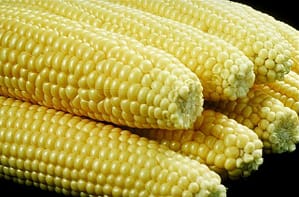Dimethyl Sulphide (DMS) is a sulphur compound that is typically considered an off-flavor in beer at high concentrations. DMS is introduced into beer from the thermal decomposition (during wort heating) of S-methylmethionine (SMM) produced in the embryo of barley during the malting process. SMM finds its way into wort, as it is readily dissolved from malt at all mash temperatures.
DMS is avoided by achieving a strong rolling boil to evaporate the compound out of the boiling wort.
During fermentation, yeast can also reduce another precursor called dimethyl sulfoxide (DMSO). DMSO can also turn into DMS in the finished beer by a reaction by a yeast enzyme called DMSO reductase. The extent of this conversion of DMSO depends upon the particular yeast strain in use. DMS can also arise from wort infected with spoilage organisms.

How Do I Detect DMS In My Beer?
When DMS is present in beer, it can manifest as an aroma and taste of cooked vegetables, particularly corn or canned corn. Some may describe it as having a sweet, vegetal, or sweetcorn-like aroma and taste. High concentrations of DMS can make beer undrinkable and can be overwhelming.
How To Avoid DMS In Your Beer
Your best option for controlling DMS is on the hot side. This includes malt selection, mashing, and proper boiling.
By far the most common culprit when it comes to DMS is very pale malt such as Pilsner. However, modern, highly-modified malts contain lower levels of the pre-cursor SMM, as much as older, less well modified malts, so DMS is reportedly less of a problem as it used to be.
When SMM is heated, such as during mashing or boiling, it begins to break down into DMS. Boiling wort works to drive much of it away. The best method to avoid DMS in your beer is with a rolling boil and rapid cooling, as soon as you’re done. Also, letting the boil off freely escape rather than condensate on the lid of your kettle during the boil and when cooling. The condensation that falls back into the kettle is dripping with DMS.
Heating SMM doesn’t just create DMS; it also creates dimethyl sulfoxide (DMSO), which is odorless but tastes like garlic to some. DMSO in fermenting wort can be transformed into DMS, but vigorous fermentation works to scrub it away. As most lager styles usually exhibit a decidedly non-vigorous fermentation, they hold onto DMS more readily. This means that light lagers, such as Pilsner, have a greater potential for noticeable levels of DMS. Typically, the reason low levels are acceptable for some lighter styles.
Proper cleanliness is also something else to keep on top of. Bacterial contamination can create DMS, but if infection is the issue, your beer likely has bigger problems than a little sweetcorn flavour. Often, infection-related DMS exhibits itself with flavours and aromas more like cabbage, celery, or even shrimp. Mmmm…. nice!
Happy brewing!
